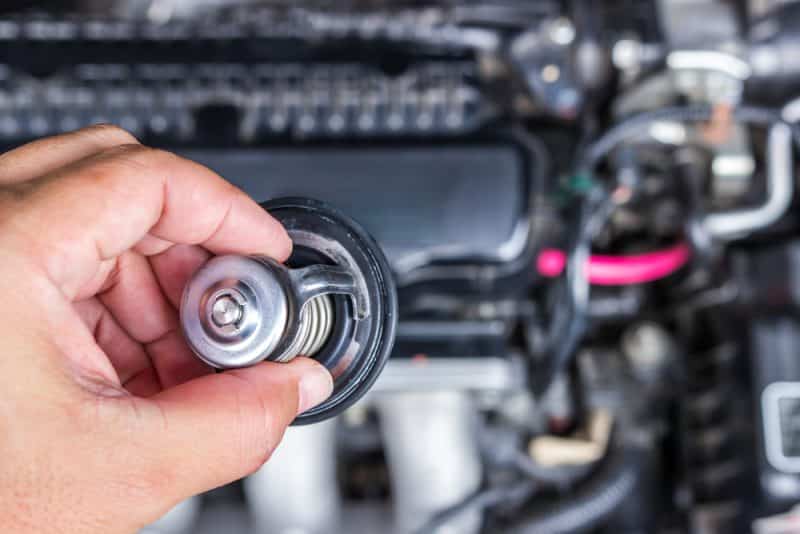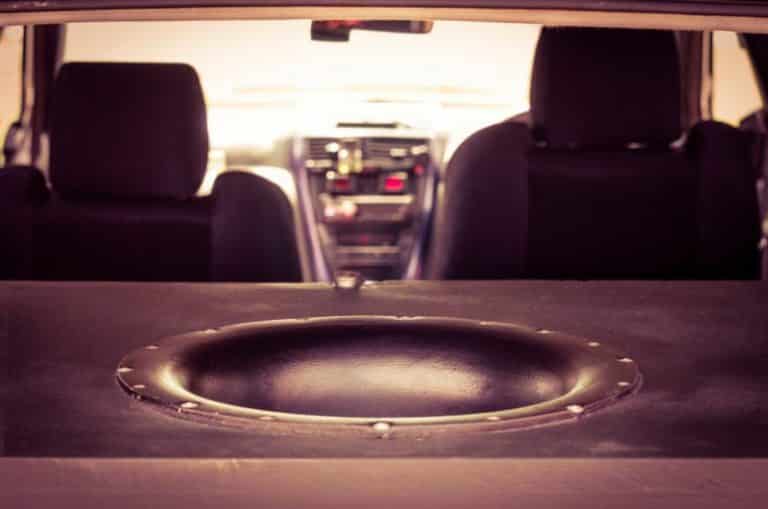How Do I Know If My Jeep Thermostat Is Bad? (Explained)
The thermostat of your automobile helps regulate coolant temperature, but a bad thermostat would cause a change in a change in your vehicle temperature reading, which causes it to fluctuate.
A faulty thermostat even makes a vehicle’s cabin heater malfunction. This article will outline the functionality of a Jeep thermostat.
Let’s begin by identifying a faulty thermostat?
You can know if a thermostat is bad when you notice a change in your automobile temperature gauge, causing it to read high. A faulty thermostat is dangerous to your Jeep as it can cause overheating in your engine and shorten the life span of your engine and your radiator.
How Do You Check a Jeep Thermostat?

It’s essential to check your Jeep thermostat to know if it’s faulty.
Most users neglect important components in their automobiles because of the size; the thermostat may look small, but it is one critical factor that keeps your automobile in good shape.
The thermostat in your vehicle is in place to regulate the flow of coolant through your car’s engine. It reacts to temperature changes by opening and closing a tiny valve.
To properly check your thermostat, follow the procedures outlined below:
- Make sure your automobile is on level ground and that the engine and radiator are both running cold before you start driving.
- Locate the thermostat after opening the hood of the car. Follow the upper radiator hose towards the engine; you can find the thermostat housing at the end of this pipe. The thermostat should be in the housing of the many automobiles.
When installing the thermostat housing on certain automobiles, it will connect to the lower radiator hose.
Check the service handbook for your car if you require any extra assistance in locating the thermostat.
- You can check the coolant flow in your car by removing its radiator cap. Next, initiate and maintain the idle of your vehicle’s engine. Finally, check if coolant is flowing through into the radiator filler neck. The fluid should not be flowing because your car has not achieved the operational temperature that opens the thermostat.
- If you notice that the coolant is running, this indicates that the thermostat valve has been left partially open. In most cases, this is a reliable indicator that you should replace your car’s thermostat.
- If you discover that the coolant is not running, wait until your automobile’s engine has achieved operating temperature. Then, observe the coolant flow through the radiator filler neck once more to check if it has started to flow. Your car’s thermostat may be in the closed position if you continue to see no coolant flowing, but the temperature gauge on the dashboard begins to rise.
What Are the Symptoms of a Bad Thermostat?
An overheated engine or one that’ll never achieve operating temperature are signs of a malfunctioning thermostat.
You may also note that it is oscillating in temperature on the temperature gauge. Read more to know whether My Jeep Shocks Are Bad or not?
Using a thermostat, you can ensure that your engine reaches its operating temperature as quickly as possible.
Let’s take a quick review of the warning indicators to keep an eye out for. These symptoms below give you a heads-up to help you stitch in time.
Below are what you should look out for:
#1. Overheating in the Engine
If the thermostat is left closed, the engine’s coolant will not reach the radiator and, therefore, will not be able to cool down properly.
As a result, you’ll be unable to drive for more than 10 minutes before the engine overheats again, as indicated by an elevated temperature display on your dashboard’s ticker.
So, an unexpected increase in temperature indicates that you should visit your local technician to get the thermostat diagnosed and checked.
#2. Rise and Fall of Temperature
The precise timing of the thermostat gate is required to guarantee that the engine obtains the correct temperature of the coolant.
However, it is possible that the timing is incorrect, causing the engine temperature to vary and the temperature gauge to respond incorrectly.
#3. Unstable Heater Condition
The coolant helps to raise the temperature inside your vehicle.
You may notice temperature changes within the car heater if the thermostat does not perform its function effectively to maintain a constant temperature in the vehicle’s engine.
You should examine your car’s thermostat if you notice that the temperature gauge and the temperature inside the car are both fluctuating.
How Does a Car Act When the Thermostat Is Bad?
You should be on the lookout for the following signs and symptoms of a faulty car radiator thermostat:
- It is almost certain that there is an issue with your vehicle’s engine if the check engine light comes on. To decipher the codes and identify the problem, you must consult a mechanic. A malfunctioning thermostat will most certainly activate this light.
- A broken thermostat that prevents coolant circulation in your car’s engine will cause the engine to overheat.
- Another symptom of a faulty thermostat is an engine that is too cold to run. So again, your heater is not functioning correctly, and the thermostat may be to blame in this situation.
How Can I Test My Thermostat Without Removing It?
The quickest and most straightforward method of determining whether or not the thermostat is operational is to diagnose it on the vehicle.
This test necessitates using a cold engine in the car at first. The actual procedure follows these steps:
- Start the engine and allow it to run for 2-4 minutes before turning it off. Then, gently press the pipe running to the top of the radiator with your hand. It should be cold in most cases, as the coolant circulates only between the heater and the engine at this point.
- A heated pipe, on the other hand, suggests a thermostat failure. Therefore, it is vital to pay close attention to the upper and lower ones when inspecting the hoses. If they become overheated, this is also a negative indicator.
- There are instances in which the lower branch pipe stays cold after the coolant heats up. As a result, we might also conclude that coolant cannot pass through to the radiator.
- Also, there are times when the valve becomes stuck in the middle of its range of operation. Because it is locked or open in this location, the engine heats up quite slowly. As a result, you will have to remove the thermostat.
Will a Bad Thermostat Keep a Car From Starting?

A faulty thermostat will not prevent your car from starting, nor will it smoke any more than it did previously.
Nevertheless, the engine will never reach its maximum efficiency because the sensors will always believe it requires a little choke.
It also means that the heater will never reach its maximum temperature.
If your engine becomes difficult to start and emits smoke, this indicates a fault from somewhere else, not your thermostat.
8 SIGNS OF BAD OR FAILING THERMOSTAT
Summary
A thermostat remains invaluable to your Jeep to guarantee optimum performance.
Though a faulty thermostat will not prevent your car from starting, I have outlined some signposts that indicate a bad thermostat and how you can test the functionality of your thermostat without removing it.
Don’t worry; you can quickly identify these signs and perform the test yourself; afterward, do not delay fixing your thermostat.






